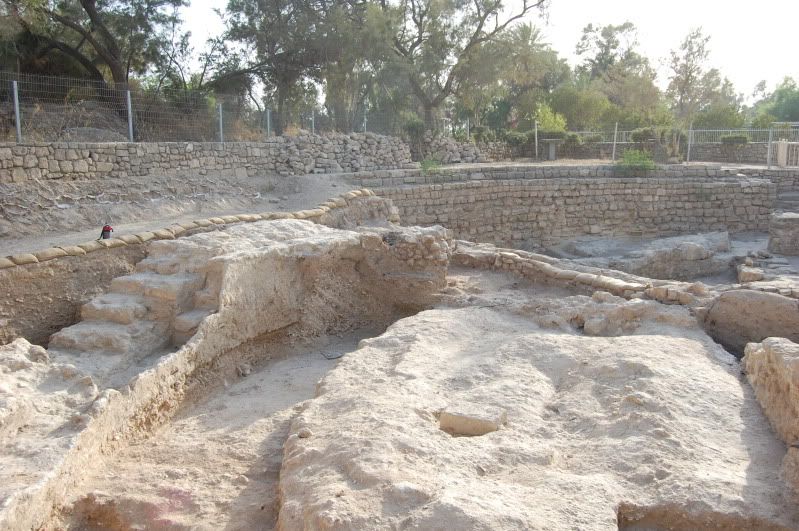
Looking at this picture, you might think that there wasn't as much done today as there had been on previous days; comparing this picture to that of the previous day, it would seem that we haven't excavated very much.
But you'd be wrong! We did a great deal, just not in terms of pounds of dirt moved. The times is coming to fully excavate and remove the stone feature, and I'd like to get a picture of it before we do that.
"Hold on a second," you might say. "You have pictures of that stone feature. I am looking at a picture of that stone feature this very second. What do you mean that you want to get a picture of the feature? Is this blog some sort of record of your descent into madness?"
Okay, I suppose it's possible that you wouldn't say that. But if you did, I'd explain thusly: When I'm taking pictures for my own record keeping, or for the amusement of others, there's not that much pressure to get everything right. The lighting can be off, there can be random detritus of the excavation around, you can see my shadow looming over whatever I'm trying to take a picture of, and so on.
But when you're taking an official picture, it's going to be something that goes into the records of the excavation, and which might wind up published. Certainly, if someone comes across a similar installation somewhere else in Ashkelon, they're going to want to look at the one I excavated. So the goal is to get a picture that shows the feature as clearly as possible, and with as few extraneous factors as possible.
So, basically, we spent the day trying to clean the feature up for the shot.

And then the stones are going to come out. I'm still not sure what this thing is -- it's got a very thin wall, with large gaps between the stones, but it very clearly does have at least one wall, and it's got a layer of fill inside it that follows that line of stones from the top to the bottom. But I've excavated it . . . well, I've told other people to excavate it as well as I could manage, I've documented what I've found as well as I could manage, and now it's got to go, so we can see what's going on underneath.
But, once it's out, I anticipate a rapid descent. The layer of fill that we've come across is a genuine pleasure to go through; it's soft enough that we can move through rapidly, it's got a decent amount of pottery in it, so it should be easy to find a date for it, and it seems to be deep and undifferentiated, which means that we can move.
Obviously, going in with that attitude means that we'll come up on some horribly complicated bit of archaeology inches below our current surface. Which would be fine too, really.
